Art pricing - Trends, Valuation, and Investment
In the world of art, understanding the intricate dynamics of pricing, valuation methods, and investment potential is crucial for artists, collectors, and investors alike. The art market is a complex ecosystem influenced by various factors, where the value of an artwork can fluctuate significantly over time.

Trends in the art market, similar to those in the real estate market and other luxury sectors, are dynamic and constantly evolving, influenced by factors such as artist popularity, collector demand, and global economic conditions. Unraveling these trends provides collectors and investors with a valuable roadmap for navigating the art market.
The value of a work of art depends on the simple formula of supply and demand. It does not matter if the artist is alive or dead. Any work of art from any art movement and any art period can reach a significant value and a high demand among art collectors if rigorous marketing is applied.
Art collectors love a good story
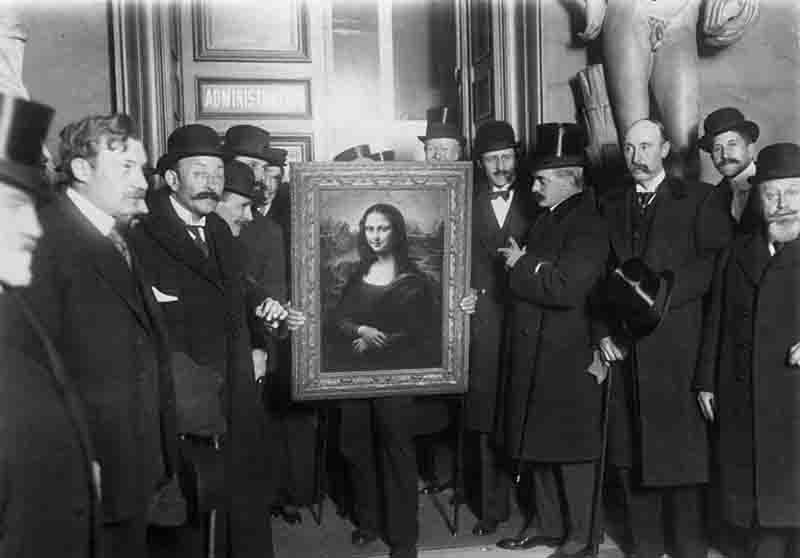
On 21 August 1911, the Mona Lisa was stolen from the Musée du Louvre in Paris. Prior to the heist, the "Mona Lisa" was hardly noticed beyond the wider art world. Leonardo da Vinci had painted her in 1507, yet it was not before the 1860s when critics started to hail her as a Renaissance masterpiece. Due to her abduction, the "Mona Lisa" literally gained fame overnight.
The Mona Lisa, well protected and exhibited in Paris, is valued by its insurance company at one billion euros. The marketing operators of the Louvre have presented a smile to the public as a concept.
Da Vinci's genius technique lets her gaze straight into the eyes of the viewer. He painted the background and the depicted protagonist from two different angles. Writers, artists, and researchers have wondered about Mona Lisa's smile ever since.
The Case of Leonardo da Vinci’s Salvator Mundi
This video examines the factors that influence the value of artwork, particularly the relationship between rarity, authenticity, and market price.
✅ Subscribe and become a channel member:
The art market has its own rules
When a work of art leaves the studio, it is a commodity. To turn it into a desirable and tradable object, it must now be transformed into a product. It is necessary for the work to be both renowned and in high demand.
The global art market is not regulated. Art is not subject to prevailing market mechanisms. Dealers operate according to their own rules.
5 most expensive artworks by living artists
| # | Artwork | Artist | M $ |
|---|---|---|---|
| 1 | Flag | Jasper Johns | 110 (2019) |
| 2 | Rabbit | Jeff Koons | 91.0 (2019) |
| 3 | Portrait of an Artist (Pool with Two Figures) | David Hockney | 90.3 (2018) |
| 4 | False Start | Jasper Johns | 80.0 (2006) |
| 5 | Everydays | Beeple | 69.3 (2021) |
Source: List of most expensive artworks by living artists.
It is safe to say that without the power of the Internet and own initiative, without imagination and vision, artists like Banksy would certainly not be the best-paid artists today.
Regardless of whether one likes his work or not, the form of marketing was successful because the technology was in place.
In the 1970s, economist David Hirsch coined the term "positional good". It describes goods and services that, because of their peculiarity, are not suitable for mass production and whose value is measured by the space they hold on the personal inventory of desirable things.
Until recently, Americans and Europeans dominated the collector market. In recent years, art enthusiasts from Asia, the Middle East, and Russia have joined the party, expanding the luxury arena.
There is a growing number of real estate tycoons, internet billionaires, hedge fund managers, oil sheiks, casino moguls, and big speculators who are passionate about art.
Precious paintings are status symbols and image boosters. The circle of buyers for expensive blue chip art is growing.
The evolving preferences of new generations of collectors lead to the establishment of new styles such as digital art.
A whole new branch of pixel art has also recently arisen out of the gaming industries.
Empowered collectors

Art is a unique and valuable commodity, and its price can vary greatly depending on a number of factors. One of the main reasons why art is expensive is its rarity.
Collectors can influence the art market's price formation. Investing in works of up-and-coming artists increases their asking price.
Public exhibitions and a significant internet presence are also tied to this development. An artist must be hyped to establish value in the art market.
Art industry's opaque relationship with price transparency has changed. Prices are now available to VIP collectors, as well as the general public. That creates greater consumer trust. Art collectors are delighted about the shift to online trading.
Understanding Art Valuation Methods
Determining the value of art for art collectors requires a meticulous evaluation process. Art valuation methods vary, but some common approaches include comparative market analysis, cost approach, and income approach.
The comparative market analysis involves examining recent sales of similar artworks to establish a price range.
The cost approach considers the expenses incurred in creating the artwork, while the income approach evaluates the potential income an artwork can generate, such as through exhibition fees or licensing.
A renowned artist's painting is appraised using the comparative market analysis method, comparing it to recent sales of similar artworks by the same artist. This approach provides a ballpark figure for its potential value in the current market.
Exploring Current Art Market Trends

From understanding art appraisal methods to exploring the impact of technology on the art market, our article is your go-to resource for demystifying art prices.
The art market is a dynamic landscape that experiences continuous shifts in trends and tastes.
Staying updated on current art market trends is essential for artists, collectors, and investors. In recent years, contemporary art has witnessed a surge in popularity, with collectors showing increasing interest in works by emerging artists.
Additionally, major art exhibitions and cultural events have significant impacts on art prices, as the influx of art enthusiasts and buyers influences demand.
A major contemporary art fair attracts global art enthusiasts, leading to increased demand and sales for contemporary artworks, resulting in higher prices.
Factors that Impact Art Prices

The art world has long been a captivating realm of creativity and expression, but beneath the surface lies a complex web of factors that influence "The Price of Art."
Art prices can be influenced by a multitude of factors, each contributing to the artwork's perceived value.
Artist reputation plays a significant role, as renowned artists often command higher prices for their works.
Economic stability, social and cultural relevance, and geopolitical factors can also impact art prices.
Additionally, factors such as rarity, condition, and provenance contribute to an artwork's value.
A contemporary artwork gains value after being featured in a high-profile art exhibition, increasing its cultural relevance and attracting more potential buyers.
Comparing Contemporary Art Prices
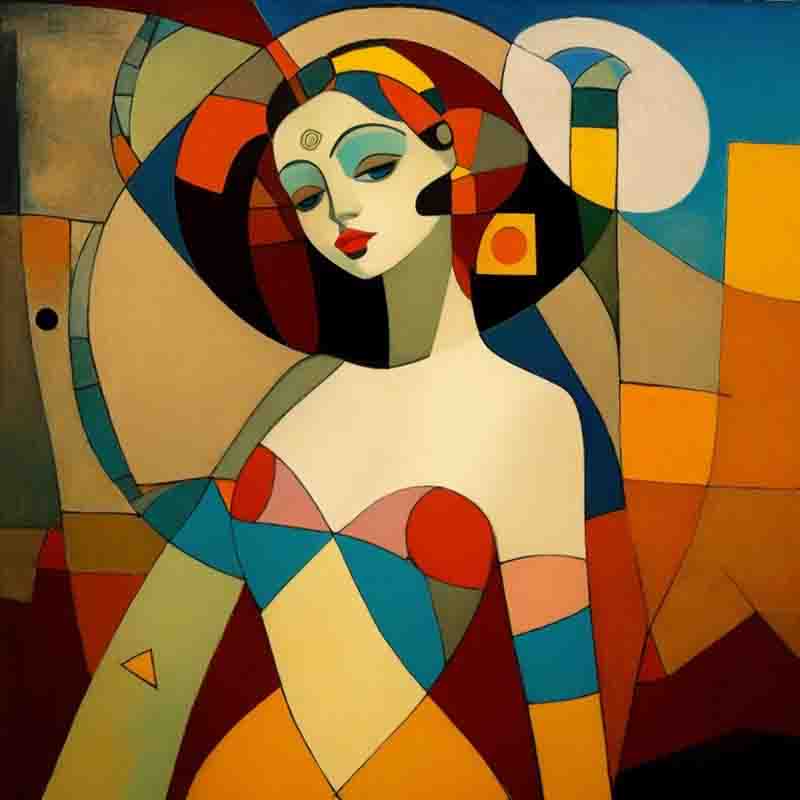
Art has increasingly become a viable investment option, with potential for significant returns. This section explores the concept of art investment values, the artists and genres that hold investment potential, and the factors that drive art's value as an asset.
Contemporary art has become a focal point in the art market, with increasing demand from both seasoned collectors and new investors.
The pricing of contemporary art varies significantly based on factors such as the artist's reputation, the medium used, and the significance of the artwork within the artist's body of work.
While established artists may command premium prices, emerging artists often offer more affordable options for collectors looking to invest.
A collector compares the prices of contemporary paintings from different artists and notices a substantial difference in pricing, influenced by the artists' levels of recognition and demand.
Investing in Art: Tips and Strategies
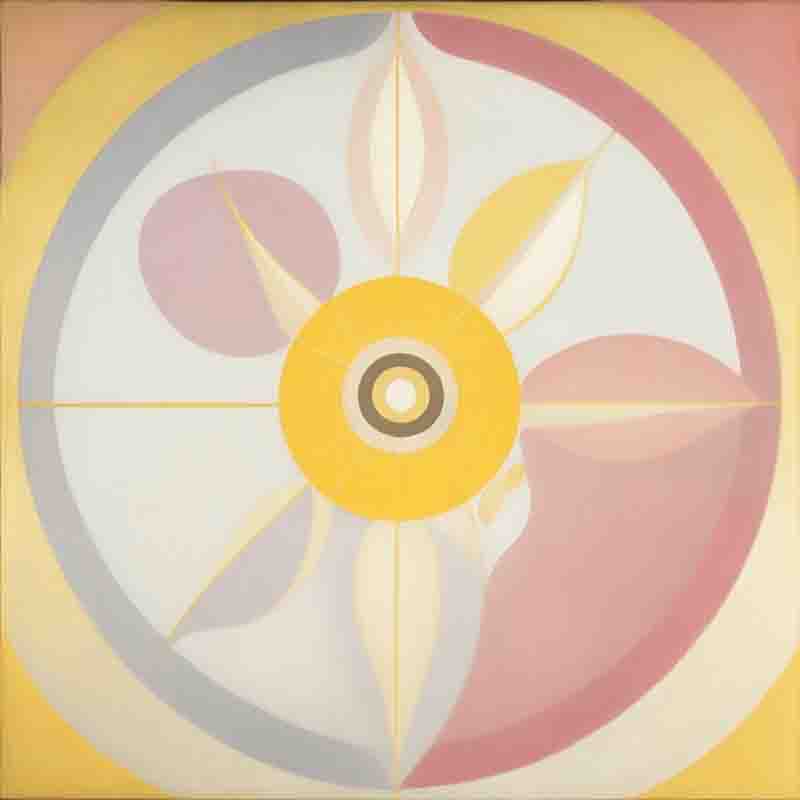
The digital age has ushered in the rise of the online art business, with virtual galleries and auctions becoming essential for artists and collectors alike.
For investors looking to diversify their portfolios, art can be an intriguing alternative investment.
The art market's potential for value appreciation attracts investors seeking to capitalize on the growing demand for art.
However, art investment comes with risks, as prices can be subject to volatility and the market's unpredictability.
It's essential for investors to conduct thorough research, understand the nuances of the art market, and consider art as a long-term investment.
An investor allocates a portion of their portfolio to art, considering it as a tangible asset that may serve as a hedge against inflation and economic uncertainties.
Art as an Alternative Investment
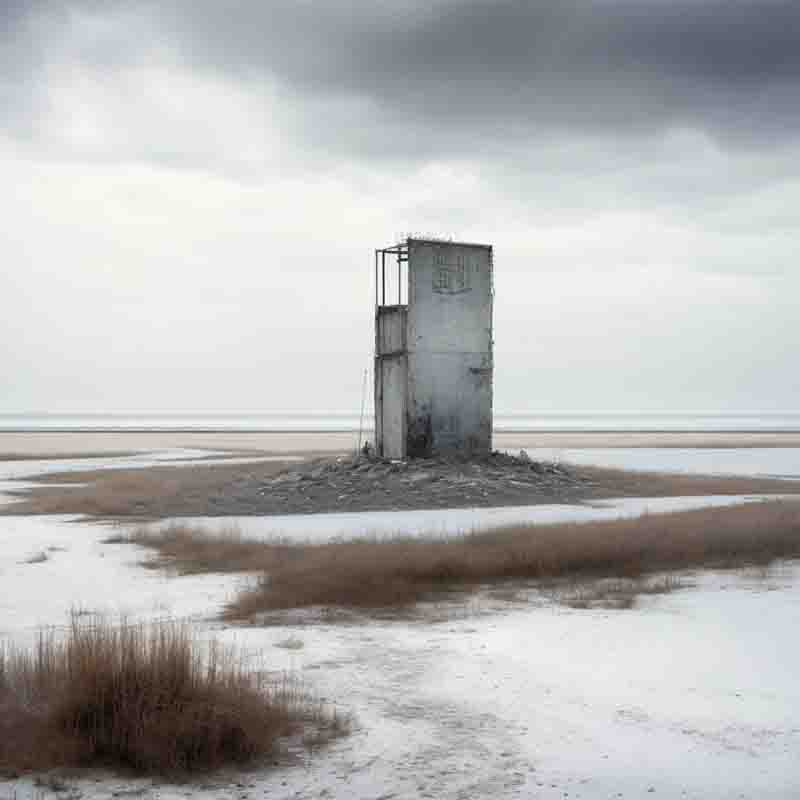
Original works of art are one-of-a-kind creations, and as such, they are highly sought after by collectors and art enthusiasts. The more rare and desirable a piece of art is, the higher its price will be.
As traditional investment markets face uncertainty, art's appeal as an alternative investment has grown.
Art offers the advantage of being a tangible asset that can potentially appreciate over time.
Moreover, unlike stocks and bonds, artworks can be enjoyed visually, adding an aesthetic element to investment portfolios.
However, investing in art requires careful consideration and expert guidance to navigate the art market's intricacies.
An investor allocates funds to acquiring art pieces from promising emerging artists, diversifying their investment portfolio beyond conventional assets.
Decoding the Art Market: Bubble and Corrections

Well-known and established artists often command higher prices for their work because their art is in high demand. The same is true for artists who have a strong following or whose work is highly regarded by critics and experts.
The art market, like any investment market, is not immune to bubbles and corrections. A bubble occurs when art prices soar to unsustainable levels, driven by speculation and market hype.
Eventually, the bubble bursts, leading to a correction, with art prices readjusting to more realistic levels. Investors should be aware of these market cycles and exercise caution when making investment decisions.
During a speculative art market bubble, the prices of artworks by certain artists surge rapidly, only to decline significantly when the bubble bursts.
The Impact of Major Art Exhibitions on Prices
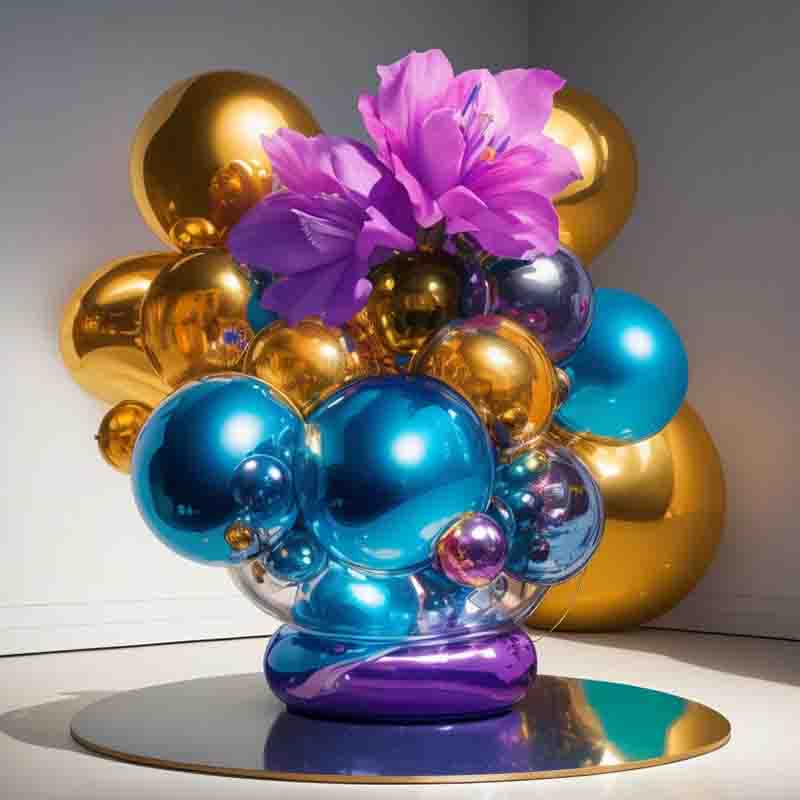
The price of art is determined by a combination of factors including rarity, reputation, materials, and market demand. These factors can vary greatly from one piece of art to another, making it difficult to predict the exact price of any given artwork.
Art exhibitions and cultural events can have a profound impact on the art market. Events like international art fairs and biennales attract art enthusiasts and collectors from around the world.
These gatherings create a vibrant marketplace where artworks find new homes, sometimes at record-breaking prices.
The increased exposure during these events can significantly influence an artist's career and the perceived value of their works.
An artist's participation in a prestigious art fair leads to increased visibility, attracting international collectors and galleries interested in acquiring their artworks.
Art Auction Prices and Trends

Like any other market, the art market is subject to supply and demand. When demand for a particular artist or style of art is high, prices will rise accordingly.
Art auctions are an integral part of the art market, providing a platform for buying and selling artworks.
Auction results can offer valuable insights into current market trends, as collectors and investors bid competitively on desirable artworks.
High-profile auctions can fetch staggering prices for works by renowned artists, while emerging artists may experience price breakthroughs in the auction arena.
An iconic artwork by a celebrated artist sells at an auction for a record-breaking price, making headlines and attracting attention to the artist's body of work.
The World of NFTs and Digital Art
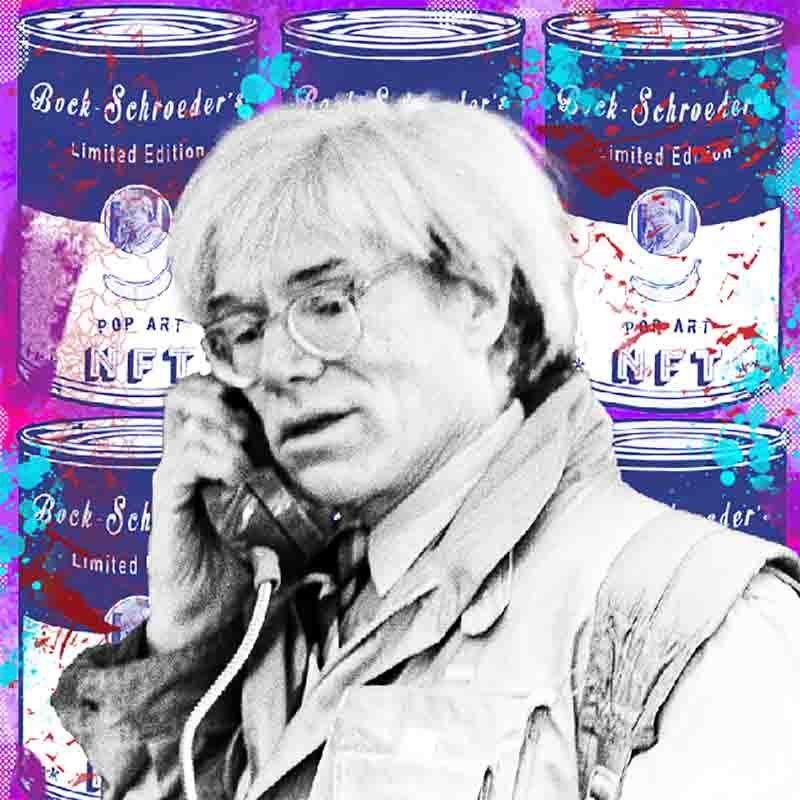
The Bock-Schroeder Foundation has issued a collection of 1,000 Andy Warhol NFTs titled “Call me Andy”. The digital collectible is not only a smart investment and a cool cultural asset, but also a perfect avatar.
The advent of non-fungible tokens (NFTs) has disrupted the traditional art market. NFTs have enabled artists to tokenize their digital artworks, giving them ownership rights and facilitating unique ownership certificates.
This digital art revolution has brought new opportunities for artists and investors, with digital art gaining recognition as a legitimate art form with significant value potential.
A digital artist creates an NFT for their digital artwork, which is then sold in a digital art marketplace, allowing the buyer to invest in this relativly new form of art investment.
Understanding Art Valuation Methods
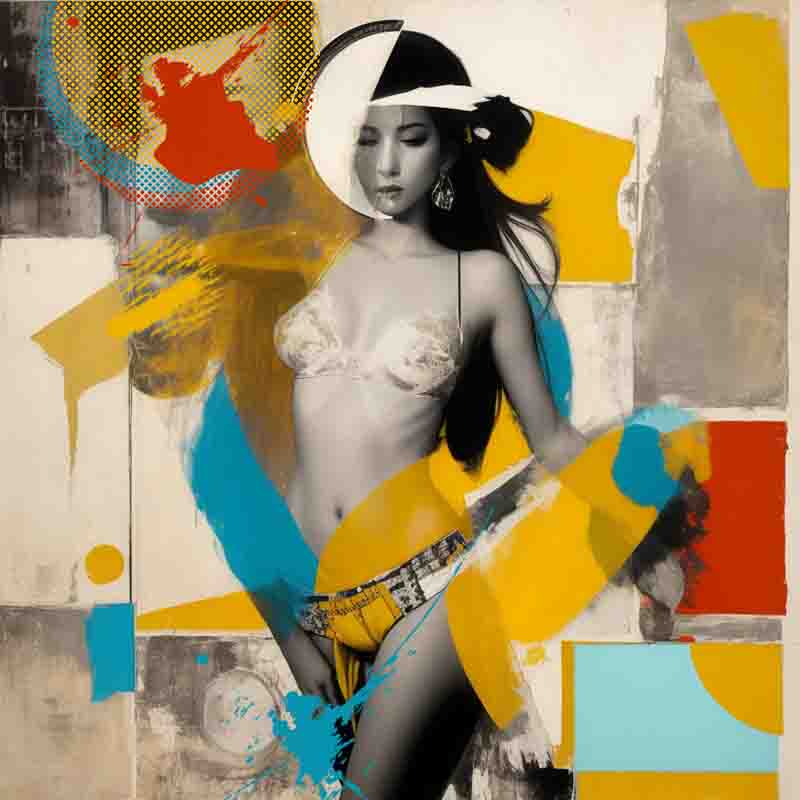
Contemporary art prices mirror the diverse expressions of the modern art world, from abstract paintings to innovative installations.
Art valuation is a meticulous process that involves determining the fair market value of an artwork. Various valuation methods are used by art experts, appraisers, and collectors to assess the worth of a piece. Let's delve into the most common art valuation methods and how they influence the pricing of artworks.
Comparative Market Analysis (CMA):
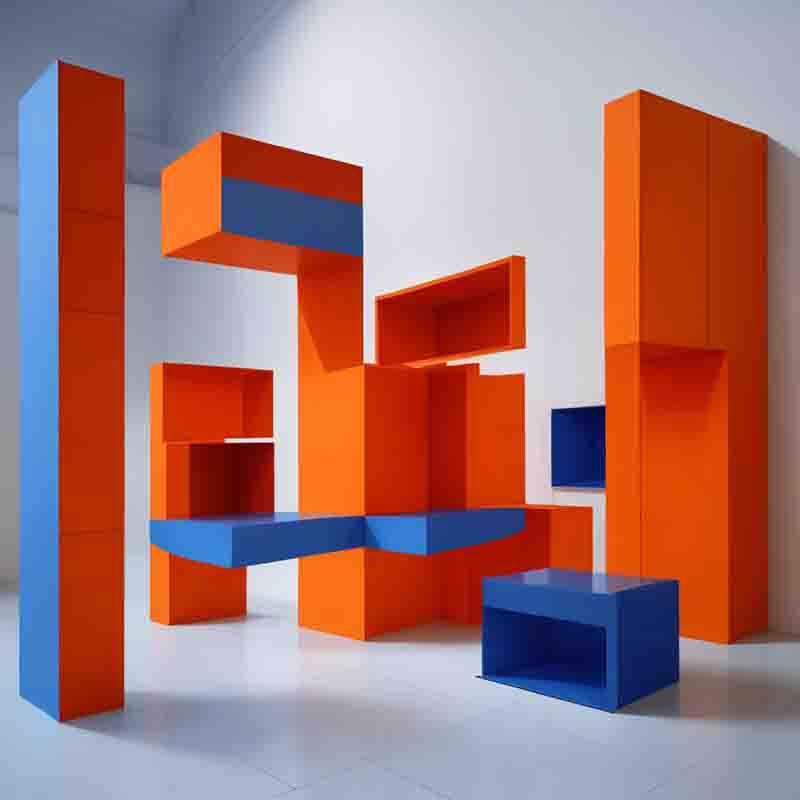
The online art business has transformed the way art is bought, sold, and experienced, providing unique opportunities and challenges for stakeholders in the art market.
The Comparative Market Analysis method is one of the most widely used approaches in art valuation.
It involves researching recent sales of similar artworks by the same artist or of comparable style and size.
By analyzing the prices these artworks have fetched in the market, an appraiser can estimate the potential value of the subject artwork.
The key is to find comparable pieces that have sold in similar market conditions and contexts.
An artist's abstract painting is appraised using the CMA method by looking at the prices of recent sales of similar-sized abstract paintings by the same artist. The appraiser then considers the current art market conditions to estimate the artwork's fair market value.
Art Price Cost Approach
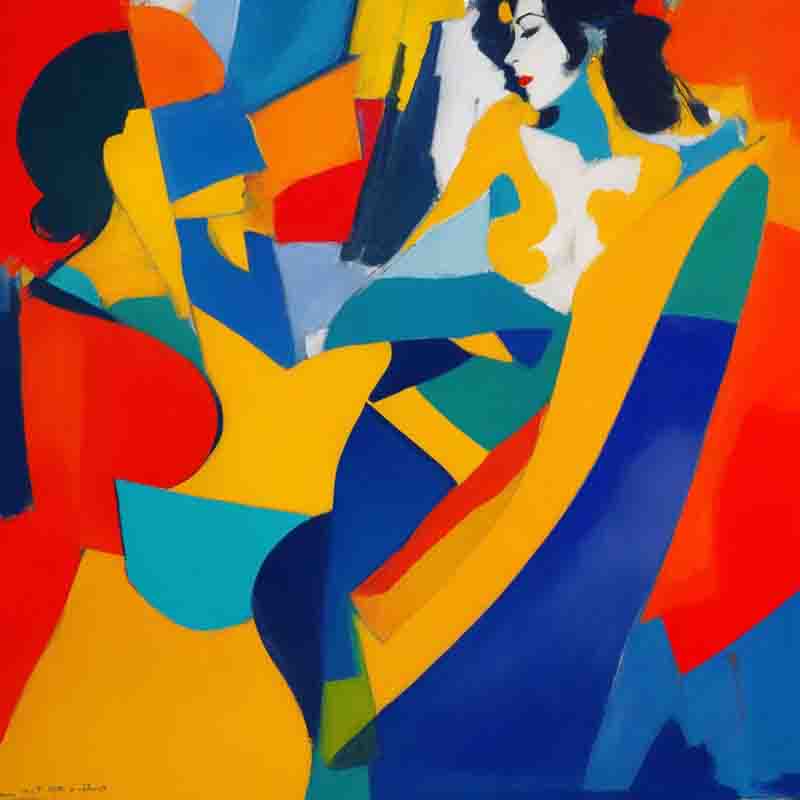
The price of artworks can rise for a number of reasons, as high-quality artworks are a sought-after investment assets.
The Cost Approach method involves evaluating an artwork's value based on the expenses incurred in creating it.
This includes the cost of materials, labor, and any other associated costs. This method is more commonly used for newly created artworks or those without a significant sales history in the market.
However, it may not be as effective for evaluating established artworks, as the cost of materials and labor might not accurately represent their true value.
A sculptor's bronze sculpture is appraised using the Cost Approach method, considering the cost of the raw materials, the labor required for crafting, and any other expenses involved in creating the artwork.
Income Approach
The Income Approach method is rarely used in traditional art valuation but finds application in certain situations.
It involves estimating the potential income that an artwork can generate over time, such as through exhibition fees, licensing, or reproduction rights.
This approach is more common for artworks with commercial value beyond their aesthetic appeal, such as those used in advertising campaigns or illustrations for books.
A painting by an artist known for illustrating book covers is appraised using the Income Approach method, considering the potential income from licensing the image for book covers and other commercial purposes.
Art Price Index and Its Role
Art price indices play a crucial role in the art market as they provide valuable insights into pricing trends and overall market performance.
An art price index tracks the changes in art prices over time and can be based on various factors such as artist, medium, region, or genre.
It helps collectors, investors, and art professionals to monitor the market's health and make informed decisions.
An art investor refers to the art price index for contemporary art to assess the performance of their art portfolio and make strategic investment choices.
Understanding art valuation methods is essential for anyone involved in the art market. Comparative Market Analysis, Cost Approach, and Income Approach are some of the common methods used to determine the value of artworks.
Additionally, art price indices offer valuable insights into pricing trends and the overall health of the art market.
By utilizing these valuation methods and staying informed about pricing trends, artists, collectors, and investors can navigate the art market more confidently and make well-informed decisions regarding "The Price of Art.
Exploring Current Art Market Trends
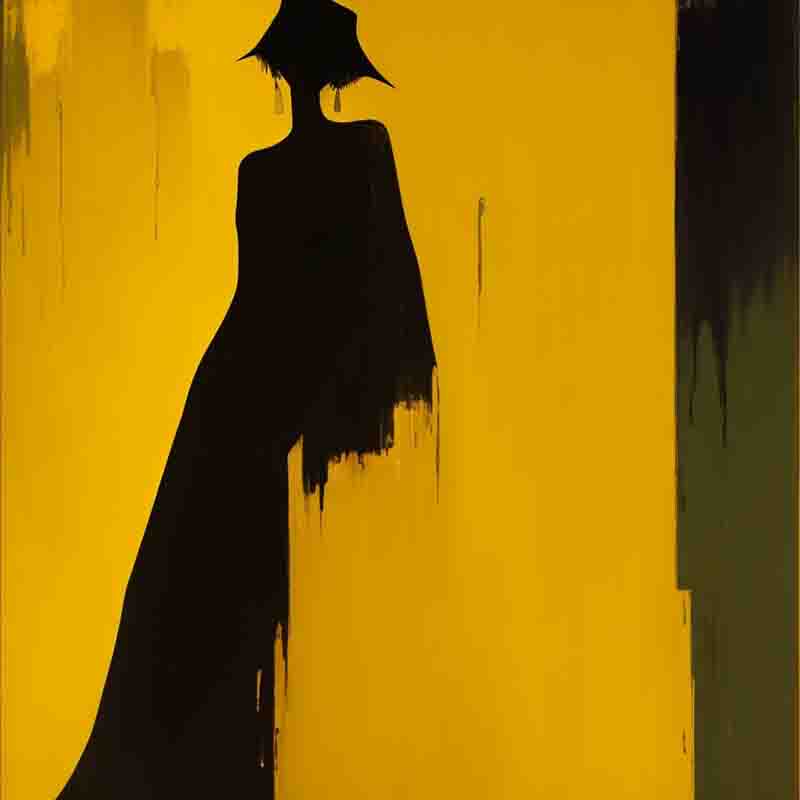
Online art marketplaces have emerged as prominent platforms for artists to showcase and sell their artworks to a global audience. These platforms facilitate direct connections between artists and collectors, streamlining the art buying process and reducing traditional barriers to entry.
The art market is a dynamic and ever-changing landscape, influenced by a myriad of factors that shape current trends and pricing dynamics.
Keeping a finger on the pulse of the art market trends is essential for artists, collectors, and investors alike.
Emerging Artists and Rising Demand
One of the notable trends in the current art market is the increasing demand for artworks by emerging artists.
Collectors and investors are showing a growing interest in works by artists who are relatively new to the art scene but show exceptional talent and potential.
This demand stems from the desire to acquire artworks at more affordable prices before the artists gain wider recognition and their prices appreciate significantly.
A young artist's contemporary paintings gain popularity at local art fairs and online galleries. Collectors take notice of their unique style and invest in their artworks, anticipating potential value growth in the future.
Major Art Exhibitions and their Impact
Major art exhibitions, such as international art fairs and biennales, have a profound impact on the art market.
These events attract art enthusiasts, collectors, and art professionals from around the world, creating a vibrant marketplace where artworks find new homes.
The increased visibility during these events can significantly influence an artist's career and the perceived value of their works.
An artist's participation in a prestigious international art fair leads to heightened exposure, resulting in increased demand for their artworks and higher prices.
Art Market and Technological Advancements
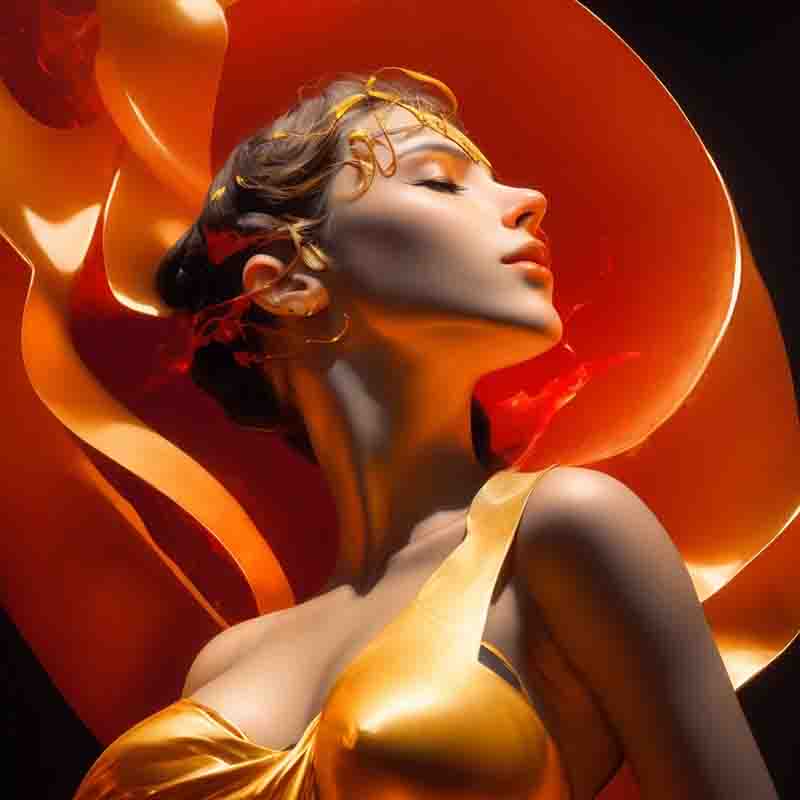
Virtual art galleries and online exhibitions offer an immersive digital experience, allowing art enthusiasts to explore artworks from the comfort of their homes. These virtual spaces have become essential for art institutions and galleries to adapt to the digital age.
Advancements in technology have significantly impacted the art market, particularly with the rise of non-fungible tokens (NFTs) and digital art.
NFTs have enabled artists to tokenize their digital artworks, creating a unique form of ownership and authentication.
The surge in popularity of NFTs has opened up new opportunities for artists and investors, expanding the art market's landscape.
A digital artist creates an NFT for their digital artwork, which is then sold in a digital art marketplace, attracting a global audience and reaching a price far higher than traditional expectations.
Regional and Cultural Influences
Art market trends are not uniform worldwide, and regional and cultural influences play a significant role in shaping preferences and values.
Artworks with cultural significance or reflecting regional identities may gain prominence within specific markets, leading to fluctuations in pricing.
A contemporary artist from a specific region gains recognition for their artwork that incorporates elements of local culture and heritage, attracting collectors who appreciate the artwork's cultural significance.
Innovative Art Forms and Interdisciplinary Art
The art market is witnessing a rise in innovative art forms and interdisciplinary works that challenge traditional boundaries.
Art that combines various media, such as digital and traditional, or blurs the lines between visual arts and other disciplines, has garnered attention from collectors and art enthusiasts seeking fresh and unique experiences.
An artist creates a series of mixed-media artworks that combine painting, digital elements, and interactive components, attracting attention at art exhibitions and driving up demand for their experimental works.
Exploring current art market trends provides valuable insights into the dynamic nature of the art world.
The demand for artworks by emerging artists, the impact of major art exhibitions, technological advancements, regional influences, and innovative art forms all contribute to the ever-changing pricing dynamics and trends in "The Price of Art."
Staying informed about these trends empowers artists, collectors, and investors to navigate the art market strategically and make informed decisions in this vibrant and diverse realm of creativity and investment.
Factors that Impact Art Prices
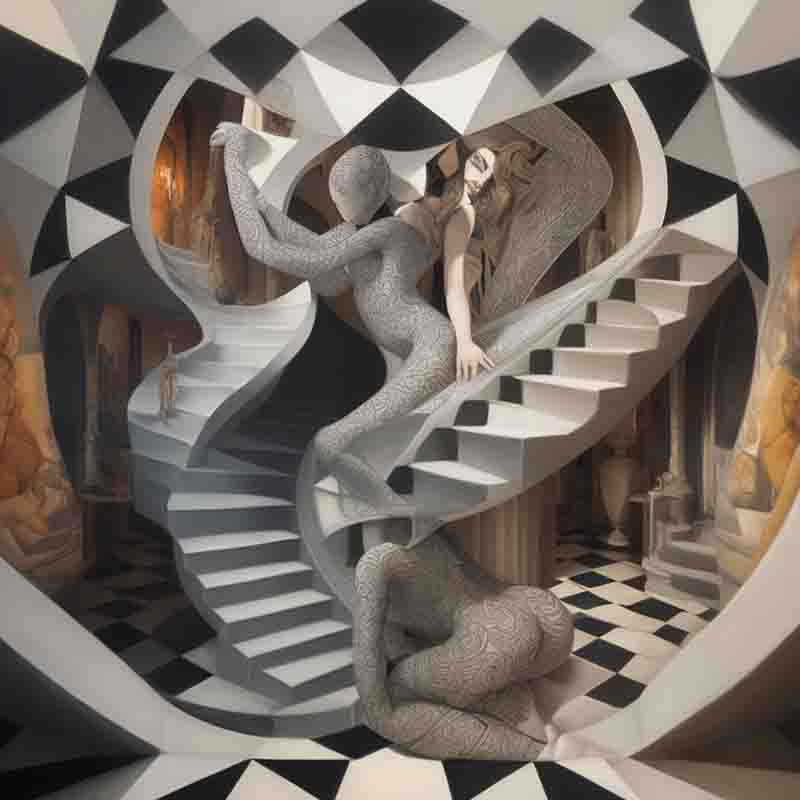
AI algorithms are now capable of creating original artworks, blurring the lines between human and machine creativity. AI-generated art raises questions about authorship, ownership, and the value of artworks produced by machines.
The art market is a complex ecosystem influenced by a multitude of factors that contribute to the pricing of artworks.
Understanding these factors is crucial for artists, collectors, and investors to make informed decisions in the dynamic world of "The Price of Art."
Artist Reputation and Recognition
The reputation and recognition of an artist play a significant role in determining the value of their artworks.
Established and renowned artists often command higher prices for their works due to their track record of successful exhibitions, critical acclaim, and a solid collector base.
On the other hand, emerging artists with promising talent may offer more affordable options, presenting investment opportunities for collectors.
An artwork by a celebrated artist known for their groundbreaking contributions to a particular art movement attracts significant attention and fetches a high price at an auction.
Demand and Supply
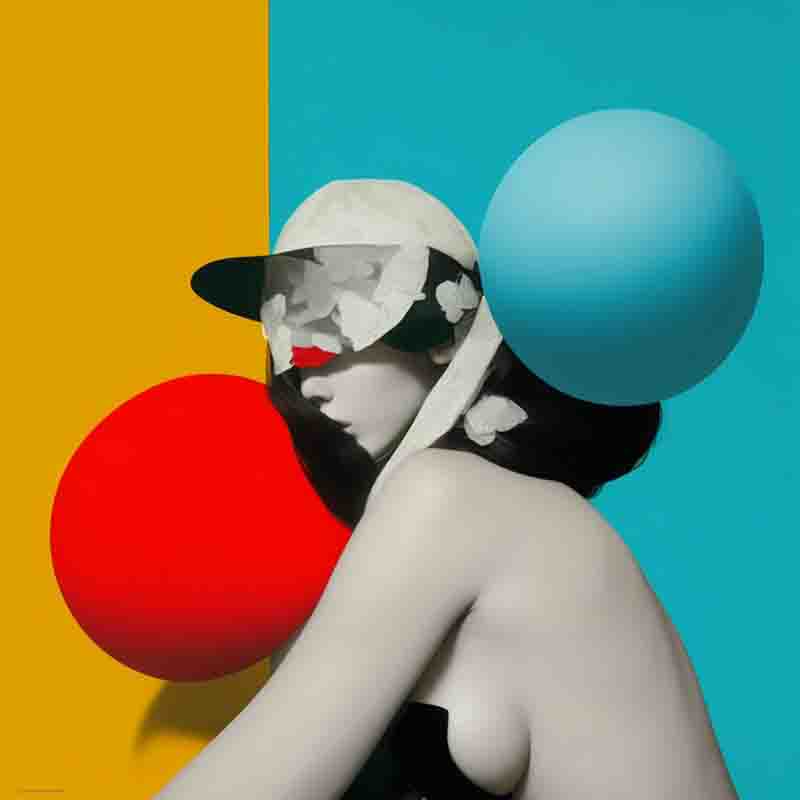
The latest art market trends encompass shifts in popular art styles, emerging artists, and collector preferences. Staying informed about these trends can help art enthusiasts make informed decisions and understand the art market's current dynamics.
The basic principles of demand and supply have a direct impact on art prices. Artworks that are in high demand and limited supply tend to command higher prices.
This is often seen during art market booms or when specific artists or art styles become trendy. Conversely, an oversupply of artworks can lead to price stagnation or decline.
An artist's series of limited edition prints becomes highly sought after, leading to an increase in demand and a subsequent rise in prices.
Economic Stability and Market Conditions
The overall economic climate can influence art prices. During periods of economic growth and stability, art prices may experience upward trends as collectors and investors feel more confident about making art acquisitions.
Conversely, economic downturns may lead to a decrease in art prices as buyers become more cautious with their spending.
During a recession, art collectors and investors may hold back from making significant art purchases, leading to a softening of art prices in the market.
Art Market Speculation
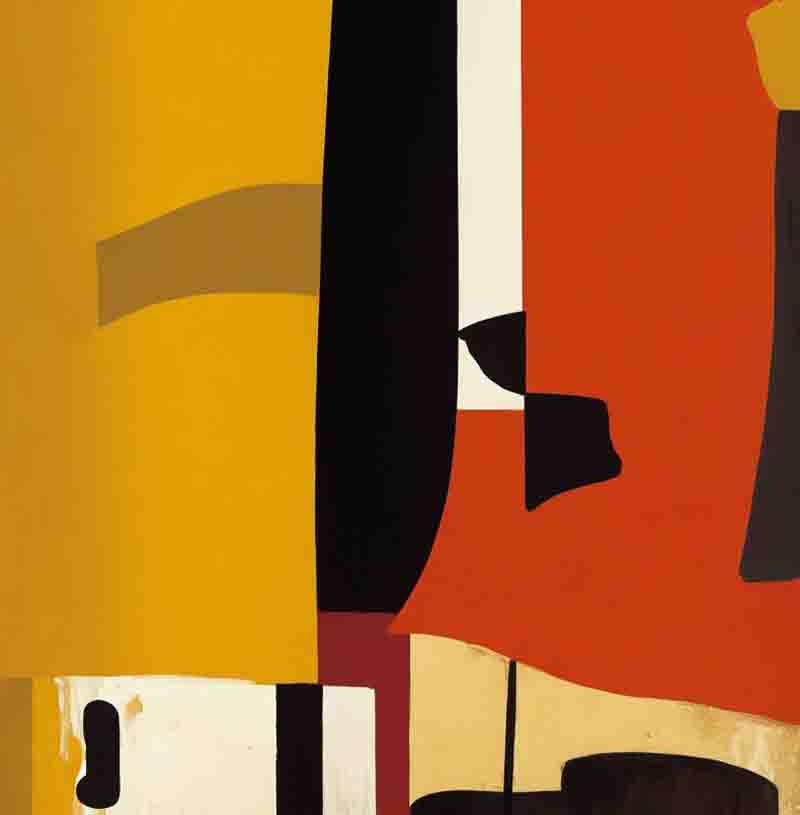
Art appraisals are essential for establishing an artwork's true worth and verifying its authenticity. This section sheds light on the art appraisal process and its significance in determining "The Price of Art."
Speculation and hype can create artificial demand and drive up art prices, leading to bubbles in the art market.
Speculative buying by investors seeking short-term gains can result in inflated prices that may not be sustainable in the long run.
A sudden surge in demand for artworks by a specific artist leads to a speculative buying frenzy, causing prices to skyrocket. However, when the bubble bursts, prices may experience a significant correction.
Rarity and Scarcity
The rarity of an artwork can significantly impact its price. Unique or rare artworks that are one-of-a-kind or part of a limited edition series often attract higher prices due to their exclusivity.
Scarcity creates a sense of urgency among collectors to acquire such artworks before they become unavailable.
A renowned artist creates a small series of paintings, each with distinct variations, making them highly sought after by collectors for their uniqueness.
Historical Significance and Provenance
The historical significance of an artwork and its provenance (history of ownership) can add value to the piece.
Artworks with a documented history of ownership by notable collectors, museums, or historical figures may attract higher prices due to their cultural and historical relevance.
An artwork with a provenance linking it to a famous historical figure's collection gains increased value and recognition in the art market.
Understanding the factors that impact art prices is essential for anyone involved in the art market.
Artist reputation, demand and supply dynamics, economic conditions, speculation, rarity, and historical significance all contribute to the fluidity of "The Price of Art."
Artists can use this knowledge to gauge their artworks' value, while collectors and investors can make informed decisions based on market trends and fluctuations.
Keeping a close eye on these factors empowers stakeholders in the art world to navigate the market more confidently and discerningly.
Comparing Contemporary Art Prices
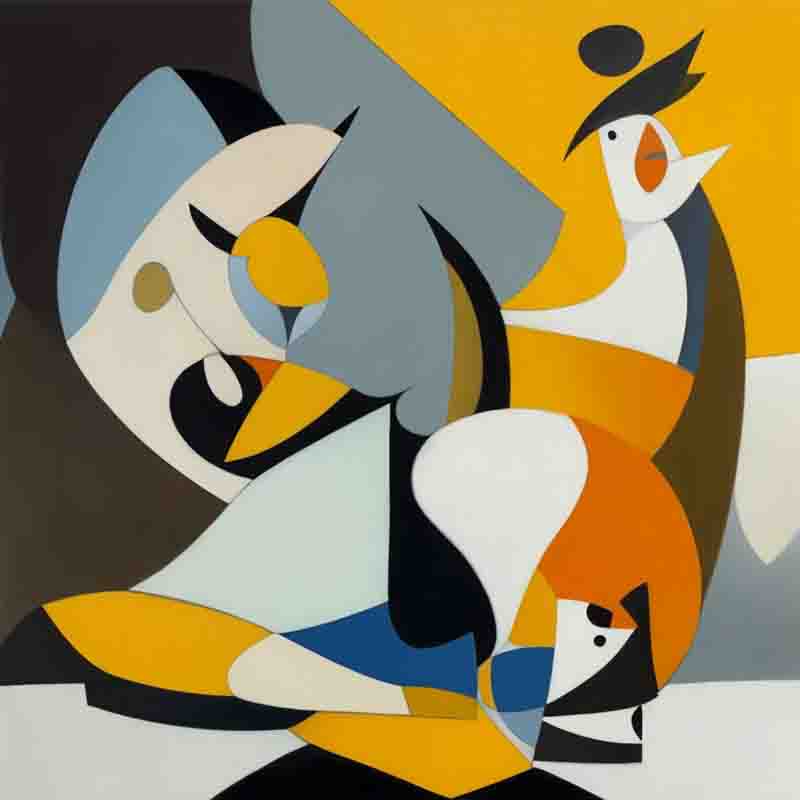
Contemporary art prices mirror the diverse expressions of the modern art world, from abstract paintings to innovative installations. This section highlights the ever-changing landscape of contemporary art values and the artists shaping its direction.
Comparing contemporary art prices is a vital aspect of understanding the value and trends within the art market.
Contemporary art encompasses a diverse range of artistic styles and mediums, making it a dynamic and sought-after segment in the art world.
By exploring and analyzing the pricing variations among contemporary artworks, artists, collectors, and investors can gain valuable insights into the market's intricacies.
Artistic Style and Influence on Prices
Contemporary art spans a wide spectrum of styles, from abstract and minimalist to figurative and conceptual.
The artistic style of an artwork can significantly influence its price. Artworks by artists associated with significant art movements or those who have influenced contemporary art's evolution often command premium prices.
A contemporary painting by a prominent artist known for their abstract expressionist style attracts high demand and achieves a higher price due to its art historical significance and the artist's influence on the art world.
Medium and Material Impact
Contemporary artists often experiment with various mediums and materials, ranging from traditional oil paintings to digital art and installations.
The choice of medium and the materials used can impact an artwork's price. Unique or unconventional materials, as well as intricate craftsmanship, can add value to the piece.
An artist creates a sculpture using recycled materials and innovative techniques, making it a statement piece that garners attention and fetches a higher price.
Artist Reputation and Recognition
The reputation of the artist within the contemporary art world plays a significant role in pricing their artworks.
Established artists with a solid track record of exhibitions, critical acclaim, and significant art sales often have higher-priced works compared to emerging artists.
An artwork by a highly recognized contemporary artist, whose works are displayed in prestigious galleries and art institutions worldwide, commands a premium price due to the artist's established career and collector demand.
Editions and Limited Prints

The art market's history holds clues to its future, with price records reflecting significant milestones and shifts in artistic tastes. This section takes readers on a journey through art price history, from iconic masterpieces to groundbreaking contemporary works.
In the contemporary art market, artists sometimes create limited editions and prints of their artworks. Limited editions, where only a specific number of copies are produced, can lead to increased demand and higher prices.
An artist releases a limited edition of prints of their popular painting, and each print becomes highly sought after, leading to increased pricing for the limited edition works.
Exhibition History and Market Success
An artist's exhibition history and their market success can significantly influence their artwork's prices.
Artists who have participated in prestigious art fairs, biennials, or solo exhibitions often experience increased demand and value for their works.
An artist's recent solo exhibition at a major contemporary art gallery garners positive reviews and attracts a surge of interest in their artworks, leading to a rise in prices.
Sales Records and Auction Results
Studying an artist's sales records and auction results can offer valuable insights into their market performance.
Artworks that have achieved record-breaking prices at auctions may indicate a growing market demand for the artist's works.
An artist's painting achieves a record price at a prestigious art auction, signaling their increasing market value and recognition.
Comparing contemporary art prices provides a comprehensive understanding of the dynamic and multifaceted art market.
Factors such as artistic style, medium, artist reputation, limited editions, exhibition history, and auction results all contribute to the pricing variations within contemporary art.
By examining these factors, artists, collectors, and investors can gain valuable insights and make informed decisions regarding "The Price of Art."
Staying attuned to the contemporary art market's nuances empowers stakeholders to navigate this exciting and diverse realm of creativity and investment.
Investing in Art: Tips and Strategies

Understanding "The Price of Art" requires exploring valuation methods, tracking market trends, and embracing technological advancements.
Investing in art can be an intriguing alternative for those looking to diversify their investment portfolio.
Art has the potential to appreciate in value over time, making it an attractive option for collectors and investors.
However, art investment requires careful consideration and a strategic approach, as the art market can be unpredictable and subject to fluctuations.
Research and Art Market Knowledge
Before venturing into art investment, it is essential to conduct thorough research and gain a solid understanding of the art market.
Familiarize yourself with art market trends, prominent artists, and emerging talents. Stay updated on auction results, art fairs, and gallery exhibitions to identify potential investment opportunities.
An art investor spends time researching contemporary art market trends and attending art fairs and exhibitions to stay informed about artists with rising popularity and potential investment value.
Seek Expert Advice
Investing in art can be complex, and seeking guidance from art consultants, dealers, and auction specialists can be invaluable.
These experts can provide insights into market trends, artist potential, and art authentication, helping you make well-informed investment decisions.
A collector consults with an art advisor who has expertise in contemporary art to gain a deeper understanding of the market and identify investment-worthy artworks.
Diversify Your Art Portfolio
Like any investment, diversification is essential in art investment. Consider acquiring artworks from various artists, art movements, and mediums. Diversifying your art portfolio can mitigate risks and potentially increase returns.
An investor allocates funds to acquire artworks from both established artists and promising emerging artists, diversifying their art collection across different styles and genres.
Consider Long-Term Investment
Art investment is often considered a long-term venture. While some artworks may appreciate in value rapidly, others may take years to yield significant returns.
Patience is key when investing in art, and the value of an artwork may only become apparent over time.
An art investor acquires a painting by a young artist, believing in their long-term potential and anticipating that their artwork's value will increase over the years.
Authenticity and Provenance
Ensure that the artworks you invest in are authentic and have a clear provenance (history of ownership).
Provenance provides credibility to an artwork and can positively impact its value. Acquiring artworks from reputable sources and galleries can reduce the risk of purchasing counterfeit or forged artworks.
An investor acquires a painting with a well-documented provenance, tracing its ownership back to the artist's studio, enhancing its authenticity and investment value.
Monitor Market Trends and Auction Results
Staying vigilant about market trends and auction results is crucial for art investors.
Keep track of how artworks by certain artists perform at auctions and observe any emerging patterns in the art market. Regularly monitor changes in demand for certain art styles or artists.
An investor tracks the auction results of a specific artist, noticing a pattern of consistent price growth, which influences their decision to invest in more artworks by that artist.
Understand Art Market Cycles
The art market experiences cycles of booms and corrections, similar to other investment markets.
Being aware of these cycles can help investors time their purchases strategically. Be cautious of speculative buying during art market booms, as prices may not be sustainable in the long run.
An art investor studies historical data on art market cycles and determines to buy art during market corrections when prices are more reasonable.
Investing in art can be a rewarding and enriching experience, but it requires thoughtful planning and a keen understanding of the art market.
By conducting thorough research, seeking expert advice, diversifying your art portfolio, and adopting a long-term perspective, investors can navigate the art market with greater confidence.
Authenticity, provenance, and monitoring market trends are critical in making informed investment decisions in "The Price of Art."
Understanding the cyclical nature of the art market empowers investors to seize opportunities and build a diverse and potentially profitable art portfolio.
Art as an Alternative Investment
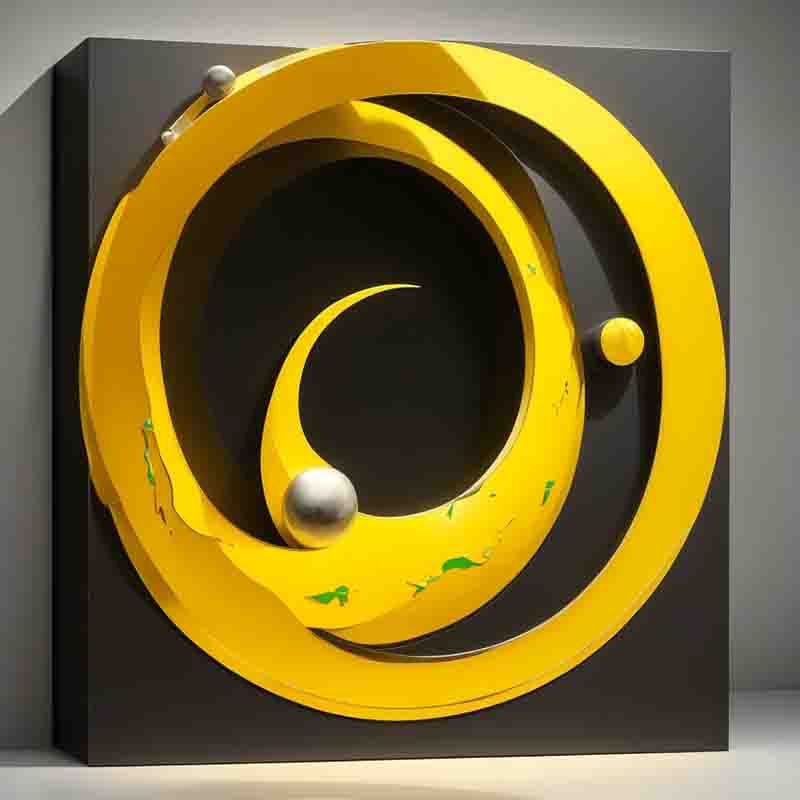
Like any investment, diversification is essential in art investment. Consider acquiring artworks from various artists, art movements, and mediums. Diversifying your art portfolio can mitigate risks and potentially increase returns.
In recent years, art has emerged as an alternative investment option for individuals seeking to diversify their investment portfolios.
Beyond traditional stocks, bonds, and real estate, art offers a unique opportunity to combine passion for creativity with the potential for financial gain.
Investing in art as an alternative asset class comes with its own set of considerations and advantages.
Let's explore the concept of art as an alternative investment, along with detailed explanations, examples, and case studies to understand its role in "The Price of Art."
Tangible and Aesthetic Value
One of the key attractions of art as an alternative investment is its tangible and aesthetic value.
Unlike financial assets, art provides an intrinsic, tangible experience that can be appreciated daily.
Artworks offer emotional and cultural significance, enriching the lives of collectors while potentially appreciating in value over time.
A collector acquires a painting by a renowned artist, deriving immense joy from the artwork's aesthetics while understanding its potential as a long-term investment.
Diversification of Investment Portfolio
Investing in art allows individuals to diversify their investment portfolios beyond traditional assets.
Art's performance may not always correlate with financial markets, making it a valuable tool for reducing overall portfolio risk.
During economic downturns, art may act as a hedge against market volatility, providing stability and potential for appreciation.
An investor allocates a portion of their investment portfolio to art, diversifying their assets and reducing dependency on conventional markets.
Potential for Capital Appreciation
While art investment is not guaranteed to appreciate in value, certain artworks and artists have demonstrated strong potential for capital appreciation over time.
Acquiring artworks by promising emerging artists or established artists whose market value is on the rise can lead to significant returns.
An art investor purchases a collection of artworks by an emerging artist whose career takes off, resulting in substantial capital appreciation over the years.
Art Market Resilience and Historical Returns
Despite fluctuations in the art market, history has shown that well-selected artworks can withstand economic challenges and deliver favorable returns.
Art has demonstrated its resilience as an investment asset over centuries, attracting both collectors and investors seeking long-term value.
An investor compares historical returns of select artworks to those of traditional financial assets, finding that art has offered competitive returns over the long term.
Cultural and Historical Significance
Investing in art not only provides potential financial gains but also offers the opportunity to support cultural and historical preservation.
Art collectors often acquire artworks of cultural significance, contributing to the preservation of artistic heritage.
A collector acquires a painting by a renowned artist from a specific art movement, understanding its cultural and historical significance as an investment in preserving art history.
Potential for Passion-Driven Investment
Art investment allows individuals to combine their passion for art with financial pursuits. Passion-driven investment can enhance the overall investment experience, as collectors derive pleasure from owning artworks they deeply admire.
An art enthusiast invests in artworks by their favorite artists, recognizing the dual satisfaction of supporting artists they admire and holding potential appreciating assets.
Art as an alternative investment offers a compelling opportunity for individuals to diversify their portfolios and potentially benefit from capital appreciation over time.
With its tangible and aesthetic value, art investment appeals to collectors seeking emotional fulfillment alongside financial returns.
While art investment requires thorough research, expert guidance, and consideration of market trends, it presents a unique and culturally significant avenue for participating in "The Price of Art" as an alternative asset class.
As with any investment, a balanced approach to art investment and prudent decision-making are essential for maximizing its potential within an overall investment strategy.
Decoding the Art Market: Bubbles and Corrections

Art investment is often considered a long-term venture. While some artworks may appreciate in value rapidly, others may take years to yield significant returns. Patience is key when investing in art, and the value of an artwork may only become apparent over time.
The art market, like any other financial market, is subject to cycles of booms and corrections. Understanding the dynamics of market bubbles and corrections is essential for art investors and collectors to navigate "The Price of Art" successfully.
Art Market Bubble
An art market bubble refers to a period when art prices experience rapid and unsustainable growth, often fueled by speculative buying and excessive demand.
During a bubble, prices for certain artists or art styles can soar to unprecedented levels, far exceeding their intrinsic value.
Art market bubbles are characterized by an unrealistic euphoria and the belief that art prices will continue to rise indefinitely.
In the early 2000s, the contemporary art market experienced a bubble, with prices for artworks by certain artists reaching astronomical levels. However, when the bubble burst during the global financial crisis in 2008, many art prices plummeted, leading to significant losses for some investors.
Factors Contributing to Bubbles
Several factors can contribute to the formation of art market bubbles. These may include an influx of new investors seeking quick profits, aggressive marketing campaigns promoting certain artists or art styles, and speculative buying based on the belief that prices will continue to rise without justification.
During a bubble, speculators may engage in "flipping" artworks, rapidly buying and selling for short-term gains, further inflating prices and contributing to the unsustainable growth.
Art Market Corrections
An art market correction occurs when the inflated prices in the market readjust to more realistic and sustainable levels.
Corrections can be triggered by changes in economic conditions, shifts in investor sentiment, or the end of speculative buying. During a correction, art prices may experience a decline or plateau as demand cools down.
After the 2008 financial crisis, the art market underwent a correction, with prices of certain artists and artworks decreasing to more reasonable levels in line with their true value.
Impact of Corrections on Art Values
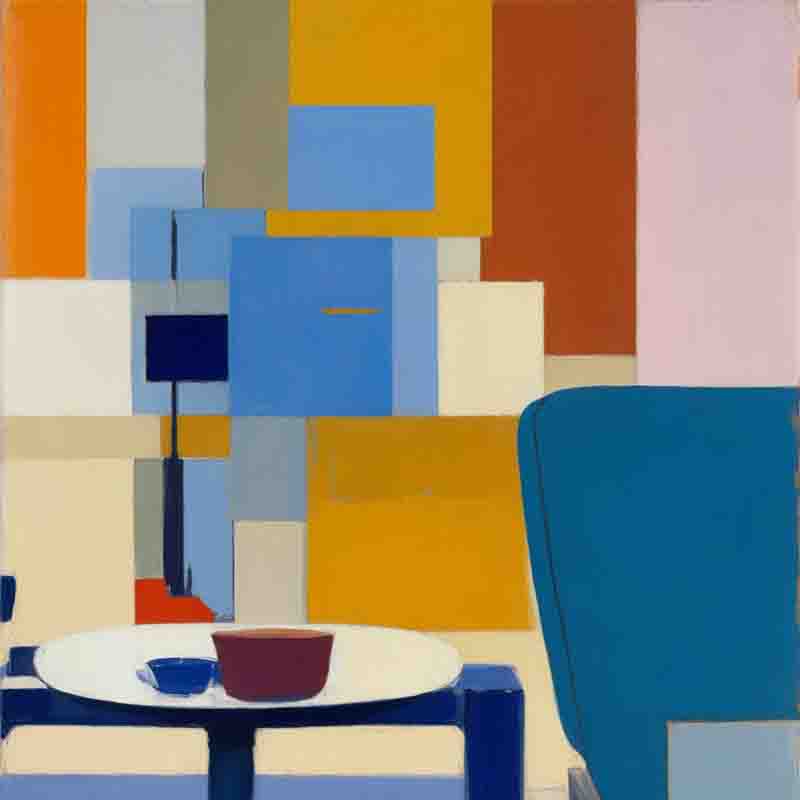
Like any investment, diversification is essential in art investment. Consider acquiring artworks from various artists, art movements, and mediums. Diversifying your art portfolio can mitigate risks and potentially increase returns.
Art market corrections can have varying impacts on different artists and artworks. While some artists may experience a significant decline in prices, others may maintain their value due to their strong reputation and art historical significance.
Corrections can provide opportunities for collectors and investors to acquire artworks at more reasonable prices.
During a correction, prices for speculative art may drop, while artists with established careers and cultural importance may see a more moderate decline in their artworks' value.
Navigating Bubbles and Corrections
To navigate art market bubbles and corrections, investors and collectors must approach art investment with caution and a long-term perspective.
Conducting thorough research, seeking expert advice, and focusing on artists with genuine artistic merit can help avoid falling into speculative buying during bubbles.
An investor diversifies their art portfolio with a mix of established and emerging artists, prioritizing artists with strong artistic vision and historical significance over short-term trends.
Understanding art market bubbles and corrections is vital for making informed decisions in "The Price of Art."
While art market bubbles can lead to unsustainable price growth, corrections provide opportunities for realistic valuation and investment.
By approaching art investment with due diligence, thoughtful research, and a long-term perspective, investors and collectors can navigate the art market's ebbs and flows, making informed choices to build a robust and potentially profitable art portfolio.
As with any investment market, staying attuned to market trends and seeking expert advice is key to successfully decoding the art market and its cycles.
The Impact of Major Art Exhibitions on Prices
Major art exhibitions play a significant role in shaping the art market, influencing artists' reputations, and impacting art prices.
When a prominent artist or a significant art movement is featured in a major exhibition, it can lead to a surge in demand for their artworks and potentially drive up prices.
Understanding the impact of major art exhibitions on prices is crucial for artists, collectors, and investors alike to navigate "The Price of Art" successfully.
Increased Visibility and Demand
Major art exhibitions provide artists with a platform to showcase their artworks to a broader audience of art enthusiasts, collectors, and curators.
The increased visibility often leads to heightened demand for the artist's works, as collectors and investors become aware of their artistic vision and talent.
An emerging artist participates in a prestigious international art fair, gaining exposure to a global audience and witnessing a surge in inquiries and interest in their artworks.
Enhanced Artist Reputation
Being featured in a major art exhibition can significantly enhance an artist's reputation within the art world.
The association with a renowned institution or curator adds credibility to the artist's body of work, leading to increased recognition and potential price appreciation for their artworks.
An artist's inclusion in a major museum retrospective solidifies their position as a leading figure in the art world, elevating the value and demand for their artworks.
Art Market Buzz and Hype
Major art exhibitions generate buzz and excitement within the art market. Collectors and investors anticipate discovering new talents and acquiring artworks from established artists.
The anticipation and hype surrounding such exhibitions can lead to a surge in buying activity, impacting prices.
The announcement of a highly anticipated art exhibition featuring a selection of renowned contemporary artists creates buzz in the art market, resulting in an increase in demand for their artworks.
Rarity and Limited Availability
For some major art exhibitions, artworks displayed may be limited in number, such as solo shows or curated group exhibitions.
The limited availability of these artworks can drive up demand, resulting in increased prices for the featured artists.
A solo exhibition by a prominent artist showcases a limited series of new paintings, leading to a rush of collectors vying to acquire one of the rare and exclusive pieces.
Long-Term Impact on Prices
The impact of major art exhibitions on prices can extend beyond the duration of the exhibition itself.
The exposure gained from participating in a significant show can have a lasting effect on an artist's career, leading to sustained interest and appreciation for their artworks in the long run.
An artist's participation in a major biennial results in lasting recognition and continued demand for their artworks, contributing to consistent price appreciation over the years.
Investment Opportunities for Collectors
For collectors and investors, major art exhibitions present unique investment opportunities.
Discovering and acquiring artworks by emerging artists featured in such exhibitions can be rewarding, as their careers and market value may grow significantly in the future.
A collector acquires artworks by emerging artists exhibited in a major art fair, recognizing the investment potential and anticipating their artistic development.
Major art exhibitions wield substantial influence on the art market, shaping artist reputations, sparking demand, and impacting art prices.
The increased visibility, buzz, and limited availability of artworks featured in such exhibitions can lead to significant price appreciation.
For artists, major exhibitions can be transformative, propelling their careers to new heights.
For collectors and investors, these exhibitions present opportunities to discover promising artists and acquire artworks with long-term investment potential.
Understanding the impact of major art exhibitions is essential for navigating "The Price of Art" strategically and making informed decisions in the dynamic and evolving art market.
Art Auction Prices and Trends
Art auctions serve as a barometer of the art market's health, reflecting the demand and value of artworks across various periods and styles.
Studying art auction prices and trends provides valuable insights for artists, collectors, investors, and art enthusiasts to gauge the current state of "The Price of Art."
Art Auction as Price Indicators
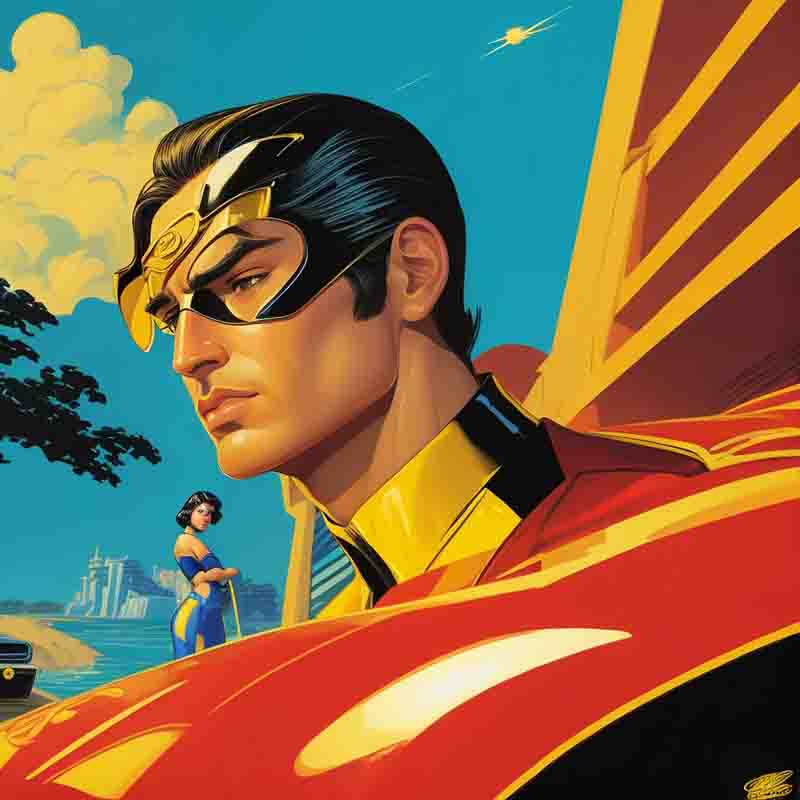
Staying vigilant about market trends and auction results is crucial for art investors. Keep track of how artworks by certain artists perform at auctions and observe any emerging patterns in the art market.
Art auctions play a crucial role in establishing the market value of artworks. The hammer prices achieved at auctions indicate the current demand and perceived worth of specific artists and their works.
An artwork by a celebrated contemporary artist sells for a record-breaking price at an auction, signaling strong demand and market recognition for the artist's creations.
Record-Breaking Auction Sales
Record-breaking auction sales generate headlines in the art world, capturing the attention of collectors, investors, and the public. These sales can significantly impact the perception of an artist's value and lead to price increases for their artworks.
A painting by a renowned historical artist achieves a record price at an auction, generating interest in the artist's oeuvre and influencing the pricing of their other works in the market.
Art Market Cycles in Auctions
Art auctions reflect the cyclical nature of the art market. During periods of economic prosperity, art prices may soar, driven by confidence and strong buying power. Conversely, during economic downturns, art prices may experience corrections as demand softens.
Art prices at auctions witness a surge during a bullish art market, with collectors and investors willing to pay premium prices for quality artworks.
Popularity of Art Movements
Art auction results can indicate the popularity and demand for specific art movements. Auction houses may dedicate themed sales to movements like Abstract Expressionism, Pop Art, or Minimalism, revealing current collector preferences
A dedicated auction of Pop Art attracts widespread attention and competitive bidding, revealing a sustained interest in this influential art movement.
Resale and Secondary Market
Art auctions also feature artworks from the secondary market, where collectors resell their pieces.
The prices achieved in the secondary market can provide insights into an artist's long-term market appeal and the potential for resale value.
An artwork by a deceased artist from the mid-20th century realizes a higher price at auction than its original purchase price, demonstrating its value as a collectible asset.
Emerging Artists and Auctions
Art auctions present opportunities for emerging artists to gain recognition and establish market value.
When an artwork by an emerging artist achieves a favorable price at auction, it can signal the artist's potential for future success.
An artwork by a young, up-and-coming artist surpasses its estimated value at auction, signaling a growing interest in the artist's innovative approach and potential market appeal.
Art auction prices and trends serve as crucial indicators of the art market's dynamics and the value of artworks.
Record-breaking sales, market cycles, art movement popularity, and the emergence of new artists are all reflected in auction results.
ollectors, investors, artists, and art enthusiasts can benefit from studying auction outcomes to make informed decisions in "The Price of Art."
By closely monitoring art auction prices and trends, stakeholders can stay attuned to the ever-evolving art market, identify investment opportunities, and navigate the dynamic landscape of art with greater confidence and knowledge.
The World of NFTs and Digital Art
In recent years, the art world has witnessed a transformative shift with the emergence of NFTs (Non-Fungible Tokens) and digital art. NFTs have revolutionized how art is created, bought, and sold, offering artists and collectors new opportunities to explore "The Price of Art" in the digital realm.
What are NFTs and Digital Art?

Rare and collectible digital artpieces are not just jpeg files or GIFs; they are unique creations that embody the artist's vision and skill, imbued with a digital scarcity that makes them prized possessions for discerning collectors.
NFTs are unique digital assets that are powered by blockchain technology, making them distinct and irreplaceable.
Digital art is created using digital tools and exists in a non-physical, digital format.
NFTs serve as certificates of authenticity and ownership for digital art, allowing creators to sell and collectors to purchase exclusive digital assets.
An artist creates a digital artwork using specialized software and minted it as an NFT on a blockchain platform, ensuring its authenticity and uniqueness.
The Rise of NFTs in the Art Market
NFTs have gained immense popularity in the art market due to their potential to authenticate digital creations and establish scarcity in a digital environment.
Artists now have the ability to monetize their digital works and collectors can own exclusive digital pieces.
A digital artist auctions an NFT of their artwork, attracting numerous bidders who compete for ownership of the unique digital asset.
NFTs and Artistic Possibilities
NFTs have opened up new artistic possibilities for creators, enabling them to explore innovative forms of expression and interactivity in the digital realm.
Artists can create dynamic and interactive digital art pieces that respond to user input or evolve over time.
An artist designs an NFT-based artwork that changes its appearance based on the time of day or the weather conditions, offering a unique and ever-changing experience for the owner.
Collecting Digital Art through NFTs
NFTs have redefined art collecting, enabling art enthusiasts to own exclusive digital art pieces that can be displayed on digital frames or screens.
Digital art collectors have a secure and verifiable way to claim ownership of their prized NFT-based artworks.
A digital art collector acquires an NFT representing a limited edition digital artwork, displaying it on their digital frame alongside their physical art collection.
Impact on Art Market and Value
The advent of NFTs and digital art has led to discussions about the future of the art market and how it impacts the value of traditional physical artworks.
Some argue that NFTs can democratize art ownership, while others question the sustainability of the NFT market.
The rise of NFTs has sparked debates among art market experts about their potential to disrupt traditional art market models and redefine the concept of art ownership
NFTs and digital art have introduced groundbreaking changes to "The Price of Art," reshaping how artists create, sell, and collectors own art in the digital realm.
The rise of NFTs has brought new possibilities for artistic expression and opened up a novel market for digital art collecting.
While NFTs have revolutionized the art market, debates continue regarding their long-term impact on the traditional art market and the sustainability of the NFT frenzy.
As the world of NFTs and digital art continues to evolve, artists, collectors, and art enthusiasts alike must embrace this transformative shift and explore its vast artistic and investment potentials.
The Online Art Business
The internet has revolutionized the art industry, creating new avenues for artists, collectors, and art enthusiasts to engage in "The Price of Art" through online platforms and marketplaces.
The online art business has transformed the way art is bought, sold, and experienced, providing unique opportunities and challenges for stakeholders in the art market.
This section delves into the world of the online art business, offering detailed explanations, examples, and case studies to provide valuable insights into this dynamic and rapidly evolving landscape.
The Rise of Online Art Marketplaces
Online art marketplaces have emerged as prominent platforms for artists to showcase and sell their artworks to a global audience.
These platforms facilitate direct connections between artists and collectors, streamlining the art buying process and reducing traditional barriers to entry.
An emerging artist lists their artworks on an online art marketplace, gaining exposure to art enthusiasts and potential buyers from different parts of the world.
Virtual Art Galleries and Exhibitions
Virtual art galleries and online exhibitions offer an immersive digital experience, allowing art enthusiasts to explore artworks from the comfort of their homes.
These virtual spaces have become essential for art institutions and galleries to adapt to the digital age.
A renowned art gallery hosts a virtual exhibition featuring a collection of paintings and sculptures, attracting art lovers from around the globe to view and engage with the artworks.
Global Reach and Accessible Art
The online art business has democratized art access, allowing people from diverse backgrounds and locations to discover and purchase artworks.
Artists now have the opportunity to reach a vast global audience without the constraints of physical galleries.
An art collector from a remote area acquires a piece from an international artist through an online art platform, appreciating the accessibility and convenience of the online art business.
The online art business has reshaped "The Price of Art," providing artists and collectors with new opportunities and a wider reach in the global art market.
Online art marketplaces, virtual galleries, and digital auctions have become integral to the art industry's evolution, adapting to the digital age and fostering art engagement in innovative ways.
The case study of Sotheby's online sales highlights the successful integration of digital strategies in a traditional art business model. Additionally, the emergence of digital art and NFTs has transformed art ownership and collecting, making art more accessible and inclusive.
As the online art business continues to evolve, artists, collectors, and art enthusiasts must embrace these digital platforms to engage with art in novel and transformative ways, contributing to the dynamic growth and diversification of the art market.
The art market's evolution demands a willingness to embrace change and adapt to emerging technologies and trends.
Artists, collectors, and art institutions must explore creative collaborations with AI and other innovative tools to push the boundaries of traditional artistic expression.
"The Price of Art" remains a complex and multifaceted topic, influenced by a wide range of factors that constantly evolve in the dynamic art market. AI, NFTs, online art business, and technological advancements continue to shape the art world's landscape, offering new opportunities and challenges for artists, collectors, and art enthusiasts.
As the art market embraces innovation, it must also remain mindful of the need for ethical considerations and sustainable practices. Embracing change, collaboration, and empowering artists and collectors are key to navigating the evolving art landscape successfully.
In this ever-changing art world, stakeholders must strike a delicate balance between tradition and innovation, using technology as a tool to enhance art experiences and foster creative growth.
As we look to the future, the art market's resilience and adaptability will determine its ability to thrive in an increasingly interconnected and tech-driven world.
By embracing the potential of AI, NFTs, and the online art business while upholding artistic integrity and inclusivity, the art market can continue to flourish, bringing the beauty and value of art to audiences worldwide.
The Price of Art: FAQ
Are you curious about music, art, technology, fashion, lifestyle, and beer?
If so, then you need to subscribe to the free Likewolf newsletter.
100% privacy. When you sign up, we'll keep you posted.

Likewolf's Typewriter
Likewolf writes about music, art, technology, fashion, lifestyle, and beer
LikewolfThe Art of Collecting
Dive Deeper into the Art Market